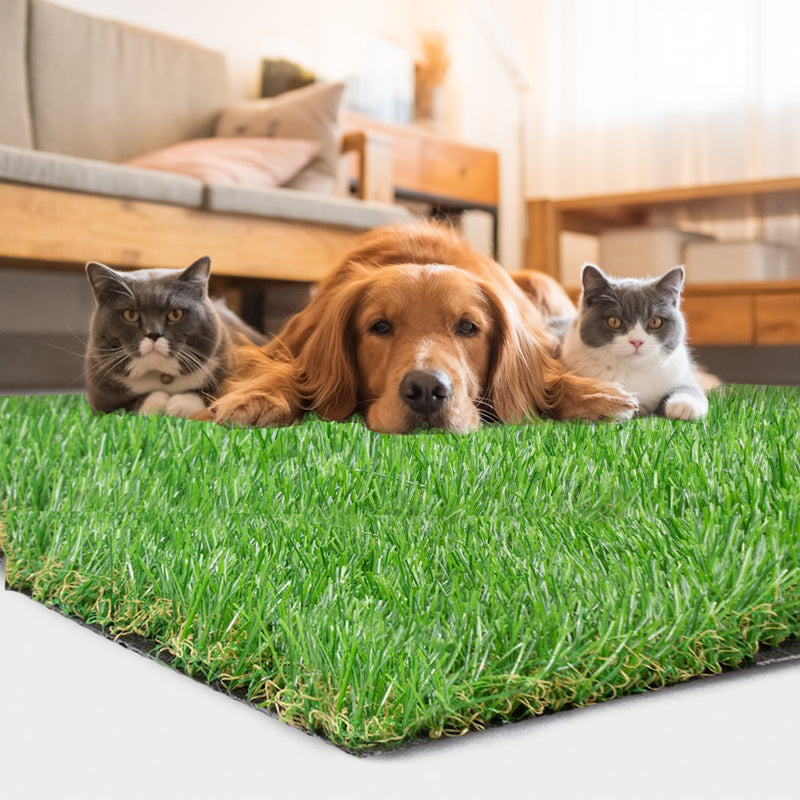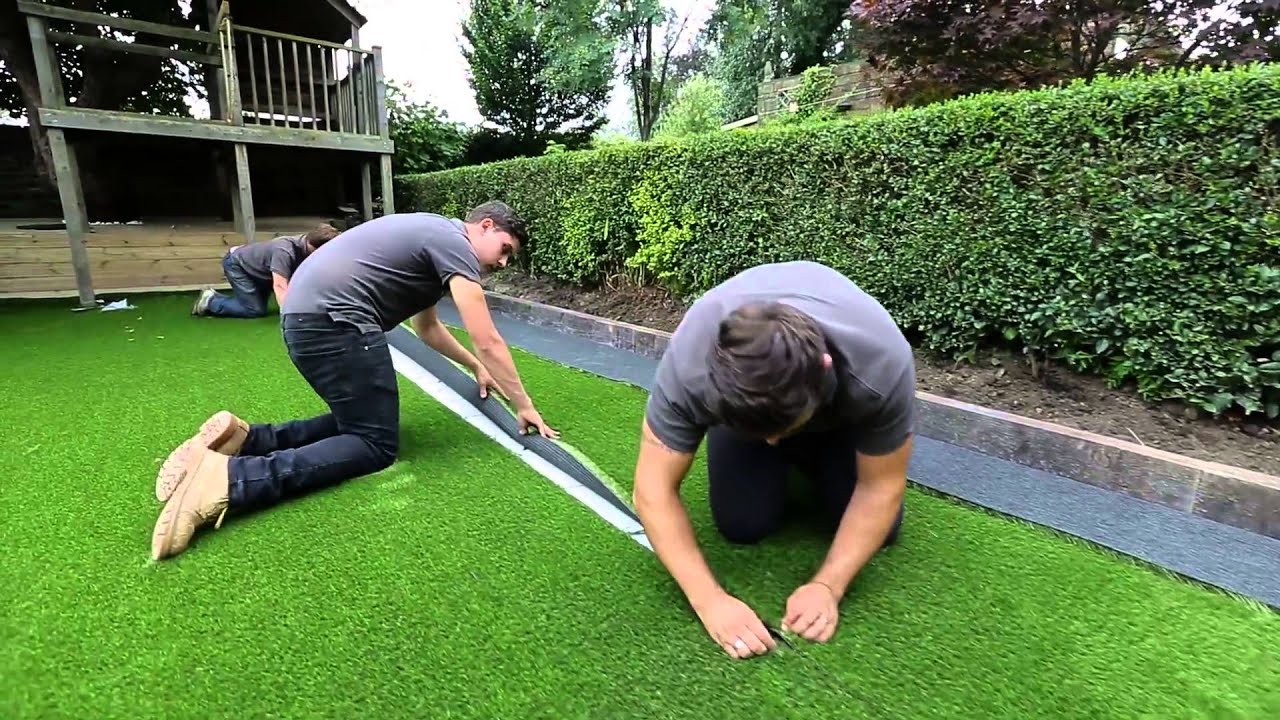See Why Homeowners Prefer Synthetic Grass for Sustainable Landscape Design Practices
As homeowners increasingly prioritize sustainability in landscaping, man-made grass has actually arised as a compelling alternative to traditional lawn. What stays to be checked out is the full range of advantages that fabricated grass can supply to home owners and the setting alike.
Water Preservation Benefits
One of the most significant advantages of synthetic grass is its duty in water conservation. Typical yard lawns need significant quantities of water to keep their lavish appearance, usually bring about overuse of local water resources, especially in dry areas. In comparison, synthetic grass removes this need totally, as it does not call for watering. This not just saves water yet likewise lowers the stress on metropolitan water systems, particularly during dry spell conditions.
In addition, the setup of man-made grass can add to a more lasting landscape. House owners can considerably lower their water expenses, permitting reallocation of sources to other environmental campaigns or household uses. In addition, synthetic grass is designed to withstand various weather conditions without the demand for supplemental watering, making it a suitable selection for regions dealing with water scarcity.
The environmental advantages expand past immediate water financial savings. By lowering water intake, synthetic grass helps to alleviate the effects of environment change, preserving essential ecosystems that are threatened by extreme water removal. As sustainable landscaping techniques gain grip, synthetic grass arises as an accountable selection for homeowners seeking to develop green outdoor rooms.
Decreased Maintenance Initiatives
Synthetic lawn significantly decreases maintenance efforts contrasted to conventional lawn yards. With fabricated turf, home owners can remove the lengthy tasks connected with natural landscaping, such as mowing, feeding, and weeding. This not just saves valuable time but likewise lowers physical labor, making grass treatment easily accessible for individuals of all ages.
Traditional lawns require constant cutting to keep a visually pleasing height, whereas fabricated turf stays continually lush without the need for cutting. Additionally, property owners no much longer need to apply chemicals or plant foods, which are typically needed to maintain natural turf healthy and balanced.
Moreover, synthetic grass is durable and long lasting, needing marginal maintenance beyond periodic brushing and washing to get rid of debris. This ease of maintenance permits property owners to appreciate their outside areas without the constant fear of maintenance, offering more time for leisure and household tasks. Ultimately, the decreased upkeep efforts associated with synthetic grass make it an attractive choice for those looking for a low-maintenance, visually appealing landscape.

Environmental Effect Decrease
There is an expanding recognition of the ecological advantages connected with artificial turf, especially in terms of water preservation and lowered chemical use. Conventional yards need significant quantities of water, particularly in drought-prone regions, resulting in boosted stress on regional water resources. On the other hand, fabricated grass removes the demand for watering, drastically reducing water usage and promoting sustainability.
Additionally, conventional yard upkeep often involves the application of chemicals, herbicides, and fertilizers, which can add to soil and water air pollution. Synthetic grass minimizes this environmental risk by needing marginal maintenance and virtually getting rid of the demand for hazardous chemicals. This not only improves soil health yet likewise protects local ecological communities from poisonous overflow.
Additionally, the production of natural lawn lawns commonly includes the usage of nonrenewable fuel sources for trimming and landscaping tools, more adding to greenhouse gas exhausts. By picking synthetic grass, home owners can significantly lower their carbon impact associated with grass care activities.
Visual Appeal and Flexibility
Along with its ecological advantages, fabricated turf supplies substantial visual charm and versatility for next page landscaping. House owners can achieve a lavish, environment-friendly look year-round, eliminating the seasonal changes commonly connected with all-natural grass. This constant aesthetic not only boosts the aesthetic appeal of a residential or commercial property yet also adds to a refined and well-maintained appearance.
In addition, synthetic grass is readily available in a range of appearances, styles, and shades, enabling for customization to suit individual preferences and style styles - Artificial turf companies phoenix. Whether used in domestic yards, business areas, or recreational areas, it can perfectly integrate into diverse landscape design layouts, from modern-day minimalist to lavish exotic settings
The convenience of synthetic lawn expands past plain look; it can be set up in numerous areas, consisting of roofs, patio areas, and also interior spaces, creating opportunities for unique landscape design options. Furthermore, it appropriates for a series of tasks, from kids's play locations to pet-friendly atmospheres, offering performance without endangering design.
Ultimately, the visual charm and flexibility of synthetic lawn make it an appealing alternative for home owners seeking lasting landscaping solutions that do not sacrifice beauty for environmental obligation.

Long-Term Cost Savings
Among the most engaging benefits of synthetic grass is its potential for long-term cost savings. Unlike all-natural lawn, which needs regular maintenance-- including mowing, watering, feeding, and insect control-- artificial lawn substantially lowers these ongoing expenses. Home owners can save a significant quantity on water costs, specifically in areas where water deficiency is a pressing problem. The removal of yard treatment services additionally contributes to economic savings, as there is no requirement for customized tools or labor.
In addition, synthetic grass has a lifespan of 15 to 25 years, depending upon its high quality and usage. This toughness decreases substitute expenses, making it a more affordable choice in the future. Moreover, the first financial investment in synthetic lawn can often be recovered through the cost savings accumulated in time.
While the upfront price might appear greater compared to sod setup, the advancing savings from reduced maintenance and water usage commonly outweigh these preliminary expenses. Inevitably, the fostering of artificial turf not only advertises a sustainable landscaping option however additionally supplies house owners a financially savvy choice that aligns with long-term budgeting goals.
Conclusion
Fabricated grass arises as an engaging choice for sustainable landscape design, offering substantial benefits in water conservation, reduced maintenance efforts, and diminished ecological influence. Its visual appeal and adaptability improve the aesthetic landscape while aligning with modern sustainability goals. In addition, lasting expense savings add to its appearance for home owners. As neighborhoods increasingly prioritize eco-friendly techniques, the fostering of synthetic grass represents a dynamic action towards achieving resilient and sustainable landscapes.
Additionally, synthetic grass is made to hold up against numerous weather problems without the demand for additional watering, making it an optimal option for areas encountering water deficiency. (Arizona turf)

Artificial grass arises as a compelling choice for sustainable landscape design, using substantial benefits in water preservation, minimized maintenance initiatives, and lessened environmental effect.